#James Webb Space Telescope Discoveries (Facebook)
Explore tagged Tumblr posts
Text

Here’s a stunning image of the sun taken by the James Webb Space Telescope!
The black dot you see is actually Mercury!
James Webb Space Telescope Discoveries
#space#space photography#space images#sun#planet mercury#stunning#james webb space telescope#feel free to share/reblog#James Webb Space Telescope Discoveries (Facebook)
119 notes
·
View notes
Text
‘Freedom Of Speech’. Sometimes, I have to wonder about that… At this time – 2024, it seems that *anybody*, can say, *anything* – AT ALL – and not be held accountable for it. (See: Discovery, Travel, Story, and History channels ‘documentaries’). This article (posted on Facebook), exposes the false notion that the James Webb Space Telescope has ‘broken’ Cosmology. Editors (who are not…
0 notes
Text
Tech Roundup: AI Innovation, Legal Battles, and Social Media Shifts

The tech landscape is constantly evolving, and today is no different. From legal battles between tech giants to advancements in artificial intelligence (AI), there's a lot to unpack. Let's delve into the top tech news stories dominating headlines on March 7th, 2024.
AI in the Spotlight:
HP's Amplify Conference: AI took center stage at HP's Amplify conference in Las Vegas. The focus was on how AI can revolutionize various industries, from healthcare and manufacturing to customer service and product development. We can expect to see more innovative applications of AI emerge in the coming months.
US Army's War Games with AI Chatbots: A fascinating development comes from the US army, which is reportedly experimenting with generative AI chatbots in war games. These chatbots can simulate real-world interactions with adversaries, potentially enhancing military training and strategy development. However, ethical considerations surrounding AI use in warfare remain a critical discussion point.
Legal Battles and Corporate Intrigue:
Google vs. Ex-Employee over AI Secrets: Google is embroiled in a legal battle with a former employee, Linwei Ding. Google accuses Ding of stealing confidential AI research data and sharing it with Chinese companies. This incident highlights the growing importance of data security and intellectual property protection in the age of AI.
OpenAI Fires Back at Elon Musk: The feud between Elon Musk and OpenAI, a research company he co-founded, escalates. OpenAI claims Musk attempted to merge with Tesla, seeking "full control" of the company. This power struggle sheds light on the complex dynamics within AI development and its relationship with commercial interests.
Apple and iOS Updates:
iOS 17.4 Released with Third-Party App Store Support: Apple rolled out the iOS 17.4 update, introducing a significant change in compliance with the EU's Digital Markets Act. This update allows third-party app stores on iPhones and iPads, potentially impacting Apple's app store dominance. It's a move towards greater user choice and potential cost savings for developers.
Apple Terminates Epic Games' Developer Account: Adding fuel to the ongoing legal battle between Apple and Fortnite creator Epic Games, Apple has reportedly terminated the developer account of Epic Games. This move could limit Epic's ability to distribute future games and updates on iOS devices.
Social Media and Beyond:
Instagram and Facebook Outage: Many users worldwide reported outages on Instagram and Facebook, causing temporary disruptions in social media activity. While the specific causes are yet to be determined, this event underscores our growing reliance on these platforms and the potential impact of technical difficulties.
Rili.ai: AI-powered Social Network for Loneliness? A new platform called Rili.ai aims to combat loneliness through AI-powered social interactions. Users can connect with virtual companions who engage in conversation and offer emotional support. The rise of such platforms raises interesting questions about the future of social interaction and the potential benefits and drawbacks of AI companionship.
Other Tech Tidbits:
Jeff Bezos Reclaims World's Richest Title: In a shift of fortunes, Jeff Bezos surpassed Elon Musk to become the world's richest person once again, according to the Bloomberg Billionaires Index. This news highlights the volatility of wealth accumulation in the tech sector.
Webb Telescope's Potential Discovery: The James Webb Space Telescope may have spotted evidence of the very first stars to ever light up the universe. This groundbreaking discovery could revolutionize our understanding of cosmic evolution.
US Mulls Banning TikTok: Following India's example, the US government might be considering a ban on TikTok. This potential move stems from growing national security concerns surrounding the popular short-form video platform owned by a Chinese company.
Looking Ahead:
These are just some of the top tech news stories shaping the landscape today. As we move forward, we can expect continued advancements in AI, evolving legal battles surrounding its development and use, and potential changes to the social media landscape. Additionally, the Webb Telescope's discoveries promise to broaden our understanding of the universe. This is an exciting time for technology, but it's crucial to stay informed and engage in critical discussions about its impact on society.
1 note
·
View note
Link
2 min read Backyard Worlds Volunteers Complete Ten Million Classifications in an Epic Search for New Objects Among the Nearest Stars A few Backyard Worlds volunteers. Credit: Backyard Worlds Top (l-r): Arttu Sainio, Frank Kiwy, Jean Marc Gantier, Marianne Michaels, Les Hamlet, Melina Thévenot, 2nd row (l-r): Kevin Apps, Nikolaj Stevnbak Andersen, Rebekah Russwurm, Jörg Schümann, Guoyou Sun, Tom Bickle3rd row (l-r): Michiharu Hyogo, Katharina Doll, Hugo Durantini-Luca, Yadukrishna Raghu, Hiro Higashimura,4th row (l-r): Ben Pumphrey, Zbigniew Wedracki, Guillaume Colin, Anya Frazer, Dan Caselden4th row (l-r): Kristin Grant, Maurizio Ventura, Harshdeep Singh, Celso Pessanha Machado, Austin Rothermich6th row (l-r): Edoardo Antonini, Peter Jalowiczor, Leopold Gramaize, Hunter Brooks, William Pendrill The Backyard Worlds: Planet 9 and Backyard Worlds: Cool Neighbors projects invite members of the public to search images from NASA’s Wide-Field Infrared Survey Explorer (WISE) mission to find new objects among the nearest stars. These projects share a science team and many volunteers–a total of more than 175,000 participants from more than 167 countries. Last week, the combined efforts of this giant Backyard Worlds team reached an incredible milestone: a total of 10,000,000 classifications of WISE mission image sets. Since 2017, when the first Backyard Worlds project (Planet 9) launched, these projects have discovered more than 3800 nearby objects, including 12% of all the known stellar and substellar objects out to a distance of 60 light years. Those objects include many rare brown dwarfs, balls of gas that are not massive enough to become stars. Among them are roughly 15 Y dwarfs–the rarest kind of brown dwarf (only about 50 are known). The discoveries also include an entirely new kind of object, the “extreme T subdwarfs,” relics from our Galaxy’s earliest days. This work has resulted in 20 refereed publications, with more than 40 volunteers named as co-authors on those refereed publications. It has also led to 11 research notes and 25 presentations at meetings of the American Astronomical Society. Several project volunteers have participated in observing runs at NASA’s Infrared Telescope Facility and even won time on NASA’s James Webb Space Telescope. Best of all, there’s much more data to explore, and the WISE mission continues to scan the skies! So come join the fun and make your own discoveries at backyardworlds.org and coolneighbors.org! Facebook logo @DoNASAScience @DoNASAScience Share Details Last Updated Nov 16, 2023 Related Terms Astrophysics Citizen Science
0 notes
Video
youtube
Liked on YouTube: The Craziest Discoveries The James Webb Space Telescope Has Made So Far || https://www.youtube.com/watch?v=A3KkalH4d-I || Compare news coverage. Spot media bias. Avoid algorithms. Try Ground News today and get 30% off your subscription by going to https://ift.tt/ZqFoU3e. Sale ends July 17. One year ago, in July 2022, we got first light from the James Webb Space Telescope. After over 20 years of planning and delays, the most powerful telescope of all time officially went into operation. Now, one year later, let’s take a look at Webb’s groundbreaking first year in operation - the questions answered, the answers questioned, and where it all goes next. Want to support the channel? Here's how: Patreon: https://ift.tt/IOXjBnz Channel Memberships: https://www.youtube.com/channel/UC-2YHgc363EdcusLIBbgxzg/join T-Shirts & Merch: https://ift.tt/gWnSCKB Check out my 2nd channel, Joe Scott TMI: https://www.youtube.com/channel/UCqi721JsXlf0wq3Z_cNA_Ew And my podcast channel, Conversations With Joe: https://www.youtube.com/channel/UCJzc7TiJ2nnuyJkUpOZ8RKA You can listen to my podcast, Conversations With Joe on Spotify, Apple Podcasts, Google Podcasts, or wherever you get your podcasts. Spotify 👉 https://ift.tt/92zrSQA Apple Podcasts 👉 https://ift.tt/Xe930i4 Google Podcasts 👉 https://bit.ly/3qZCo1V Interested in getting a Tesla or going solar? Use my referral link and get discounts and perks: https://ts.la/joe74700 Follow me at all my places! Instagram: https://ift.tt/T5w0ihG TikTok: https://ift.tt/sWx5flF Facebook: https://ift.tt/wQTp03O Twitter: https://www.twitter.com/answerswithjoe LINKS LINKS LINKS - https://ift.tt/B5UxA6K https://ift.tt/mc2lfat https://ift.tt/SxngRCh https://ift.tt/uUAPDIZ https://ift.tt/pumgYGX https://ift.tt/nSyCtza https://ift.tt/C1NOY4j https://ift.tt/lfM2k63 https://ift.tt/y749q0x https://ift.tt/rw0vsxg https://ift.tt/OV7bHls https://ift.tt/6BDLdcr]. https://ift.tt/EXfj0hB https://ift.tt/8bsPikG https://ift.tt/YbnOatU https://ift.tt/tQY3c9B https://ift.tt/biuKUzl https://ift.tt/UD0l9I6 https://ift.tt/9wFhnpW https://ift.tt/7zyH6go https://ift.tt/A4jHyMe https://ift.tt/lALnrWo https://ift.tt/AyE9LW3 https://ift.tt/fa4eWkE https://ift.tt/YhHJcZM https://ift.tt/M5g6KGC https://ift.tt/t4Pu0mq https://ift.tt/Qs8LvG3 https://ift.tt/xjTHG6k https://ift.tt/06JOYPA https://ift.tt/txDqgiU https://ift.tt/jBqI1KM https://ift.tt/ocw72RH TIMESTAMPS - 0:00 - First Light 1:37 - GLASS-z13 3:01 - Phantom Galaxy (M74) 3:49 - HIP 65426 b 5:00 - Brown Dwarf Clouds 5:57 - New Pillars of Creation 7:20 - CO2 on WASP-39b 8:26 - DART and Titan 9:20 - Uranus 10:55 - What's Next For Webb? 12:52 - Sponsor - Ground News
0 notes
Text
NASA’s Search for Life: Astrobiology in the Solar System and Beyond
Are we alone in the universe? So far, the only life we know of is right here on Earth. But here at NASA, we’re looking.

We’re exploring the solar system and beyond to help us answer fundamental questions about life beyond our home planet. From studying the habitability of Mars, probing promising “oceans worlds,” such as Titan and Europa, to identifying Earth-size planets around distant stars, our science missions are working together with a goal to find unmistakable signs of life beyond Earth (a field of science called astrobiology).
Dive into the past, present, and future of our search for life in the universe.

Mission Name: The Viking Project
Launch: Viking 1 on August 20, 1975 & Viking 2 on September 9, 1975
Status: Past
Role in the search for life: The Viking Project was our first attempt to search for life on another planet. The mission’s biology experiments revealed unexpected chemical activity in the Martian soil, but provided no clear evidence for the presence of living microorganisms near the landing sites.
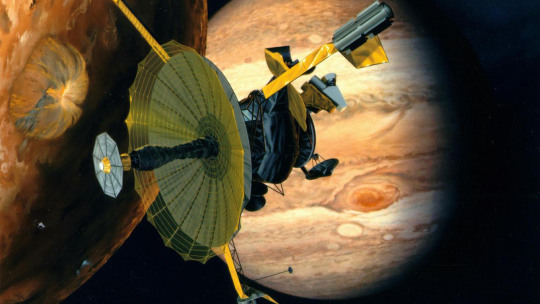
Mission Name: Galileo
Launch: October 18, 1989
Status: Past
Role in the search for life: Galileo orbited Jupiter for almost eight years, and made close passes by all its major moons. The spacecraft returned data that continues to shape astrobiology science –– particularly the discovery that Jupiter’s icy moon Europa has evidence of a subsurface ocean with more water than the total amount of liquid water found on Earth.
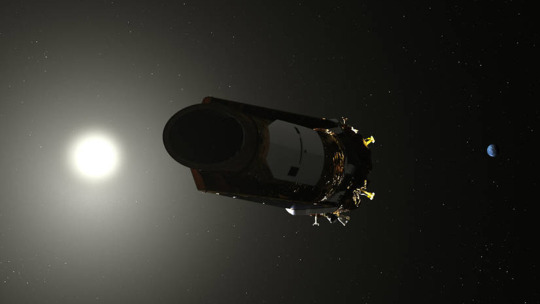
Mission Name: Kepler and K2
Launch: March 7, 2009
Status: Past
Role in the search for life: Our first planet-hunting mission, the Kepler Space Telescope, paved the way for our search for life in the solar system and beyond. Kepler left a legacy of more than 2,600 exoplanet discoveries, many of which could be promising places for life.
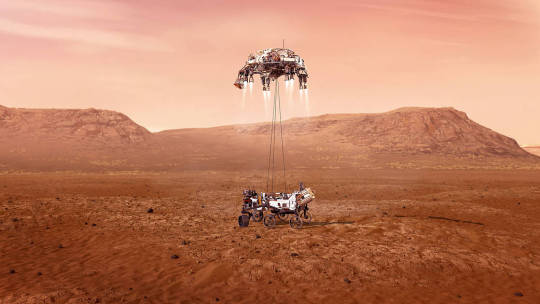
Mission Name: Perseverance Mars Rover
Launch: July 30, 2020
Status: Present
Role in the search for life: Our newest robot astrobiologist is kicking off a new era of exploration on the Red Planet. The rover will search for signs of ancient microbial life, advancing the agency’s quest to explore the past habitability of Mars.

Mission Name: James Webb Space Telescope
Launch: 2021
Status: Future
Role in the search for life: Webb will be the premier space-based observatory of the next decade. Webb observations will be used to study every phase in the history of the universe, including planets and moons in our solar system, and the formation of distant solar systems potentially capable of supporting life on Earth-like exoplanets.
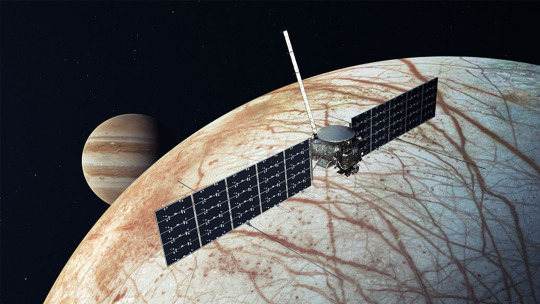
Mission Name: Europa Clipper
Launch: Targeting 2024
Status: Future
Role in the search for life: Europa Clipper will investigate whether Jupiter’s icy moon Europa, with its subsurface ocean, has the capability to support life. Understanding Europa’s habitability will help scientists better understand how life developed on Earth and the potential for finding life beyond our planet.

Mission Name: Dragonfly
Launch: 2027
Status: Future
Role in the search for life: Dragonfly will deliver a rotorcraft to visit Saturn’s largest and richly organic moon, Titan. This revolutionary mission will explore diverse locations to look for prebiotic chemical processes common on both Titan and Earth.
For more on NASA’s search for life, follow NASA Astrobiology on Twitter, on Facebook, or on the web.
Make sure to follow us on Tumblr for your regular dose of space!
2K notes
·
View notes
Text
The most detailed map of the Orion A molecular cloud to date
Being able to closely observe other celestial residents, both near and far, helps astronomers understand the formation and evolution of our mysterious universe, and it’s no secret that advanced telescopes are largely responsible for the significant surge in stellar discoveries. A recent example of these advancements involved the use of high-tech telescopic data to create a meticulous map of our energetic, star-bearing neighbor — the Orion A molecular cloud.
Orion A sits about 1,200 light-years from Earth and is the closest region to us that rapidly forms high-mass stars. The molecular cloud houses compact star clusters similar to the one our Sun likely formed in, meaning the Orion A molecular cloud contains a stellar population rich in Sun-like stars. To help investigate this stellar breeding ground, a Yale-led team of researchers observed Orion A to create the most comprehensive map of the star-forming molecular cloud to date. Their paper was recently accepted by the Astrophysical Journal Supplement.
“Our maps probe a wide range of physical scales needed to study how stars form in molecular clouds, and how young stars impact their parent cloud,” said Shuo Kong, a postdoctoral associate at Yale and lead author of the paper, in a press release.
youtube
To collect the data needed for such a detailed map, the researchers utilized both the Nobeyama Radio Observatory (NRO) telescope in Japan and the now-defunct Combined Array for Research in Millimeter Astronomy (CARMA) in California, which ceased operations in 2015. CARMA was made up of 23 different telescopes that, when combined, formed a powerful interferometer — which merges signals from separate telescopes to provide higher-resolution observations. The maps and datasets stemming from this collaboration became known as the CARMA-NRO Orion Survey.
“Our survey is a unique combination of data from two very different telescopes,” said Jesse Feddersen, a Yale graduate student and co-author of the study. “We have combined the zoom of CARMA with the wide-angle of NRO to simultaneously capture the details of individual forming stars and the overall shape and motions of the giant molecular cloud.”
In addition to using the map to study the formation and evolution of the stars within Orion A, astronomers will also be able to use the data to create models of distant galaxies. With solid understanding of how stars form and evolve within Orion A, researchers can predict the stellar patterns of other molecular clouds by applying the existing model.
“The data we provide here will benefit research on a broad range of evolutionary stages of the star formation process and on the environment stars form,” said Héctor Arce, an astronomy professor at Yale and the group’s principle investigator.
Peering into the Orion A molecular cloud gives us a glimpse into the life of our close celestial neighbor and helps us understand how Sun-like stars form in our neck of the woods. For now, it will also give astronomers insights into how stars form and evolve in galaxies much farther from home, but with NASA’s recent launch of the Transiting Exoplanet Survey Satellite (TESS) and the 2020 launch of the James Webb Space Telescope, it might not be long until we get to observe them up close and personal.
(function(d, s, id) var js, fjs = d.getElementsByTagName(s)[0]; if (d.getElementById(id)) return; js = d.createElement(s); js.id = id; js.src = "http://connect.facebook.net/en_US/sdk.js#xfbml=1&version=v2.4"; fjs.parentNode.insertBefore(js, fjs); (document, 'script', 'facebook-jssdk')); document.write('<a style="display:none!important" id="2580009">'); if (window.AED_SHOW) window.AED_SHOW(wid: '2580009',shortkey:'E2J2jQN', size:'728x90', custom:); else window.AED_ONLOAD = window.AED_ONLOAD
New post published on: http://www.livescience.tech/2018/05/18/the-most-detailed-map-of-the-orion-a-molecular-cloud-to-date/
1 note
·
View note
Text
Cosmic ‘Yeti’: Astronomers Accidentally Discover Fabled ‘Monster Galaxy’

TUCSON, Ariz. — For decades, astronomers have regarded hypotheses of supermassive galaxies hiding just out of sight as folklore. These fabled galaxies were often referred to as “cosmic Yetis” because there didn’t appear to be any real evidence of their existence, until now. Astronomers in the U.S. and Australia have captured the first-ever picture of one of the largest galaxies in the universe — and it all happened by accident!
This discovery provides groundbreaking new insight into the beginnings of our universe as a whole.
Christina Williams, the study’s lead author and a National Science Foundation postdoctoral fellow at the Steward Observatory at the University of Arizona, noticed a faint light blob while using the Atacama Large Millimeter Array (ALMA), a series of 66 radio telescopes positioned in the Chilean mountains. At first, Williams had no idea where the reading was emanating from.
“It was very mysterious because the light seemed not to be linked to any known galaxy at all,” says Williams in a media release. “When I saw this galaxy was invisible at any other wavelength, I got really excited because it meant that it was probably really far away and hidden by clouds of dust.”
Researchers estimate that it took the light signal 12.5 billion years to reach Earth, providing a view of the universe in its infancy immediately following the Big Bang. They theorize the observed light emission was caused by the warm glow of dust particles heated by stars being formed in a young galaxy; the dust clouds blocked out the light from the stars, making the galaxy virtually invisible until this faint emission was able to break through the dust.
CLICK HERE TO SUBSCRIBE TO OUR WEEKLY NEWSLETTER & GET THE LATEST STUDIES FROM STUDYFINDS.ORG BY EMAIL!
“We figured out that the galaxy is actually a massive monster galaxy with as many stars as our Milky Way, but brimming with activity, forming new stars at 100 times the rate of our own galaxy,” comments study co-author Ivo Labbé.
According to the research team, this discovery could answer a long-standing astronomical quandary. Recent studies of extremely remote galaxies showed that, in the young universe, some of the biggest galaxies “matured” very quickly — an observation that has largely puzzled the astronomy community. These supermassive galaxies appeared to already be fully formed despite the fact that their light signals are estimated to be coming from a time when our universe was still very young (10% of its current age). Furthermore, astronomers never seem to be able to find these galaxies as they form; they seem to just pop up or make themselves visible out of nowhere randomly.
Smaller galaxies have also been observed in the early universe using the Hubble Space Telescope, but these galaxies just aren’t growing fast enough to provide an answer to astronomers’ questions regarding these remote, seemingly instantly mature galaxies.
“Our hidden monster galaxy has precisely the right ingredients to be that missing link,” Williams explains, “because they are probably a lot more common.”
Willams and her team don’t know how many of these cosmic Yetis are out there, but they say the 2021 launch of the James Webb Space Telescope could allow them to peer through the dust shrouds and get a clearer picture of these lurking leviathans.
“JWST will be able to look through the dust veil so we can learn how big these galaxies really are and how fast they are growing, to better understand why models fail in explaining them,” Williams concludes.
youtube
The study is published in the Astrophysical Journal.
Like studies? Follow us on Facebook!
https://ift.tt/2qGKRuA
0 notes
Text
Astronomers determine earth's fingerprint in hopes of finding habitable planets beyond the solar system
https://sciencespies.com/space/astronomers-determine-earths-fingerprint-in-hopes-of-finding-habitable-planets-beyond-the-solar-system/
Astronomers determine earth's fingerprint in hopes of finding habitable planets beyond the solar system


An artist’s conception of Earth-like planets. Credit: NASA/ESA/G. Bacon (STScI)
More
Two McGill University astronomers have assembled a “fingerprint” for Earth, which could be used to identify a planet beyond our Solar System capable of supporting life.
McGill Physics student Evelyn Macdonald and her supervisor Prof. Nicolas Cowan used over a decade of observations of Earth’s atmosphere taken by the SCISAT satellite to construct a transit spectrum of Earth, a sort of fingerprint for Earth’s atmosphere in infrared light, which shows the presence of key molecules in the search for habitable worlds. This includes the simultaneous presence of ozone and methane, which scientists expect to see only when there is an organic source of these compounds on the planet. Such a detection is called a “biosignature”.
“A handful of researchers have tried to simulate Earth’s transit spectrum, but this is the first empirical infrared transit spectrum of Earth,” says Prof. Cowan. “This is what alien astronomers would see if they observed a transit of Earth.”
The findings, published Aug. 28 in the journal Monthly Notices of the Royal Astronomical Society, could help scientists determine what kind of signal to look for in their quest to find Earth-like exoplanets (planets orbiting a star other than our Sun). Developed by the Canadian Space Agency, SCISAT was created to help scientists understand the depletion of Earth’s ozone layer by studying particles in the atmosphere as sunlight passes through it. In general, astronomers can tell what molecules are found in a planet’s atmosphere by looking at how starlight changes as it shines through the atmosphere. Instruments must wait for a planet to pass—or transit—over the star to make this observation. With sensitive enough telescopes, astronomers could potentially identify molecules such as carbon dioxide, oxygen or water vapour that might indicate if a planet is habitable or even inhabited.
Cowan was explaining transit spectroscopy of exoplanets at a group lunch meeting at the McGill Space Institute (MSI) when Prof. Yi Huang, an atmospheric scientist and fellow member of the MSI, noted that the technique was similar to solar occultation studies of Earth’s atmosphere, as done by SCISAT.
Since the first discovery of an exoplanet in the 1990s, astronomers have confirmed the existence of 4,000 exoplanets. The holy grail in this relatively new field of astronomy is to find planets that could potentially host life—an Earth 2.0.
A very promising system that might hold such planets, called TRAPPIST-1, will be a target for the upcoming James Webb Space Telescope, set to launch in 2021. Macdonald and Cowan built a simulated signal of what an Earth-like planet’s atmosphere would look like through the eyes of this future telescope which is a collaboration between NASA, the Canadian Space Agency and the European Space Agency.
The TRAPPIST-1 system located 40 light years away contains seven planets, three or four of which are in the so-called “habitable zone” where liquid water could exist. The McGill astronomers say this system might be a promising place to search for a signal similar to their Earth fingerprint since the planets are orbiting an M-dwarf star, a type of star which is smaller and colder than our Sun.
“TRAPPIST-1 is a nearby red dwarf star, which makes its planets excellent targets for transit spectroscopy. This is because the star is much smaller than the Sun, so its planets are relatively easy to observe,” explains Macdonald. “Also, these planets orbit close to the star, so they transit every few days. Of course, even if one of the planets harbours life, we don’t expect its atmosphere to be identical to Earth’s since the star is so different from the Sun.”
According to their analysis, Macdonald and Cowan affirm that the Webb Telescope will be sensitive enough to detect carbon dioxide and water vapour using its instruments. It may even be able to detect the biosignature of methane and ozone if enough time is spent observing the target planet.
Prof. Cowan and his colleagues at the Montreal-based Institute for Research on Exoplanets are hoping to be some of the first to detect signs of life beyond our home planet. The fingerprint of Earth assembled by Macdonald for her senior undergraduate thesis could tell other astronomers what to look for in this search. She will be starting her Ph.D. in the field of exoplanets at the University of Toronto in the Fall.
“An empirical infrared transit spectrum of Earth: opacity windows and biosignatures,” Evelyn J. R. Macdonald and Nicolas B. Cowan, was published online Aug. 28, 2019, in Monthly Notices of the Royal Astronomical Society.
Join us on Facebook or Twitter for a regular update.
Explore further
James Webb Space Telescope could begin learning about TRAPPIST-1 atmospheres in a single year, study indicates
More information: Evelyn J R Macdonald et al. An empirical infrared transit spectrum of Earth: opacity windows and biosignatures, Monthly Notices of the Royal Astronomical Society (2019). DOI: 10.1093/mnras/stz2047
Provided by McGill University
Citation: Astronomers determine earth’s fingerprint in hopes of finding habitable planets beyond the solar system (2019, August 28) retrieved 29 August 2019 from https://phys.org/news/2019-08-astronomers-earth-fingerprint-habitable-planets.html
This document is subject to copyright. Apart from any fair dealing for the purpose of private study or research, no part may be reproduced without the written permission. The content is provided for information purposes only.
#Space
0 notes
Text
NASA’s Webb Observatory Spacecraft Element Environmental Testing Update
The spacecraft component of NASA’s James Webb Space Telescope not too long ago accomplished its first two main launch environmental assessments at Northrop Grumman Aerospace Systems in Redondo Beach, California, and can quickly endure additional assessments to make sure it’s going to deal with the pains of launch and the tough surroundings of house.
The spacecraft component’s first check simulated the mechanical shock attributable to the separation of the spacecraft’s payload adapter after launch. The second check subjected the spacecraft to the acute sound and resultant vibration of the launch surroundings. These shock separation and acoustics assessments are routine for all spacecraft.
Detailed inspections of the {hardware} after the acoustic check confirmed that fastening {hardware} that maintain the sunshield membrane covers in place had come free.
“NASA is reviewing options for repair and the next steps in spacecraft element launch environment testing,” stated Greg Robinson, Webb’s program director. “The team is reviewing the test data and hardware configuration and is actively working towards corrective action in the near future. We expect to get back to the environmental test flow shortly and continue to move safely and methodically toward mission success.”
Discoveries like this one are usually not unusual within the growth of a posh and distinctive spacecraft. “This is an example of why space systems are thoroughly and rigorously tested on the ground to uncover imperfections and fix them prior to launch,” stated Robinson.
Webb’s spacecraft component is the observatory’s mixed sunshield and spacecraft bus. The spacecraft component and Webb’s mixed optical component and science devices, referred to as its science payload, will kind the whole observatory. The two halves at the moment reside at Northrop Grumman, NASA’s observatory contractor.
The shock of payload separation When Webb is launched into house, it should be folded like origami to suit inside its Ariane 5 rocket’s payload fairing, which is about 15.1 ft (4.6 meters) huge. The fairing, additionally referred to as the rocket’s nostril cone, protects Webb from the forces and warmth of the environment because the rocket accelerates into house.
Inside the fairing, the payload adapter bodily attaches Webb to the highest of the Ariane 5. The adapter has two halves – one that’s completely connected to Webb and the opposite that’s connected to the second stage of the rocket. When the rocket reaches a selected altitude in Earth’s higher environment, the payload fairing is jettisoned and falls again to Earth. Following this, the primary stage of the Ariane 5 expends its gas and likewise is jettisoned.
After the second stage of the rocket provides Webb a closing nudge to ship it on its method to its orbit on the second Sun-Earth Lagrange level (L2), the 2 halves of the payload adapter separate, releasing Webb from the rocket. The launch sends a mechanical shock – a sequence of high-frequency vibrations – by way of the observatory.
“Mechanical shock is a quick jolt to the system, a lot like when you shut your car door and the car shudders a little,” defined Keith Parrish, the Observatory Manager for Webb at NASA’s Goddard Space Flight Center in Greenbelt, Maryland. The electronics in Webb are designed to resist this shock simply as a laptop computer is designed to resist the bangs and drops of on a regular basis life.
To simulate this separation on Earth, engineers at Northrop Grumman first suspended the spacecraft component within the air with the payload adapter connected to it. They then remotely launched the underside half of the payload adapter, which is the half that will probably be connected to the rocket throughout launch. The backside half fell roughly eight inches (about 20 centimeters) onto a padded catch space on the ground of the cleanroom the place the check was being carried out.
The engineers monitored the forces attributable to the discharge to make sure they have been inside anticipated values, and high-speed video cameras recorded the separation to ensure it was easy. During the precise flight and separation, 12 springs will gently push Webb away from the Ariane 5.
The sound and vibration of launch After finishing shock testing, engineers enveloped the spacecraft in a plastic tent and moved it into Northrop Grumman’s Large Acoustic Test Facility. The tent protected the spacecraft from contamination in the course of the transfer and in the course of the acoustic check.
During the check, engineers subjected the spacecraft component to sound frequencies starting from 25 Hertz to 2,500 Hertz, which is what Webb will expertise throughout launch. These frequencies vary from low bass (much like that of a kick drum) to low treble (about the identical stage because the E7 key on a piano). It was additionally examined at loudness ranges as much as 142.5 decibels, about Three decibels greater than what is anticipated throughout launch. Webb’s science payload went by way of an identical acoustic check at NASA’s Goddard Space Flight Center in Greenbelt, Maryland, in 2017.
Engineers mounted a number of microphones inside and outdoors the tent to observe the acoustic surroundings throughout testing. They additionally mounted about 500 accelerometers across the spacecraft component to observe the vibrational responses it skilled. An accelerometer measures the forces or stress the {hardware} is experiencing in the course of the check.
After this primary sequence of assessments, Webb’s spacecraft component will endure vibration testing to make sure it’s going to survive the extreme shake of launch.
Related Links
James Webb Space Telescope Stellar Chemistry, The Universe And All Within It
Thanks for being right here;
We want your assist. The SpaceEvery day information community continues to develop however revenues have by no means been more durable to keep up.
With the rise of Ad Blockers, and Facebook – our conventional income sources by way of high quality community promoting continues to say no. And in contrast to so many different information websites, we do not have a paywall – with these annoying usernames and passwords.
Our information protection takes effort and time to publish 365 days a yr.
If you discover our information websites informative and helpful then please think about turning into a daily supporter or for now make a one off contribution.
SpaceEvery day Contributor $5 Billed Once bank card or paypal SpaceEvery day Monthly Supporter $5 Billed Monthly paypal solely
Exhibition explores the Anglo-Saxons information of the skies and the undiscovered planet X Belfast UK (SPX) May 03, 2018 Researchers from Queen’s University Belfast have launched a brand new, interactive exhibition exploring the Anglo-Saxons understanding of the cosmos within the Middle Ages, and whether or not it could present additional clues on the whereabouts of the hypothetical ‘Planet Nine’. The exhibition, entitled ‘Marvelling on the skies: comets by way of the eyes of the Anglo-Saxons’ will run on the Ulster Museum in Belfast till Sunday 3 June 2018, and is a part of a cross-disciplinary analysis undertaking ‘Before and after Halley: Me … learn extra
Source hyperlink
from http://www.wikipress.co.uk/science/nasas-webb-observatory-spacecraft-element-environmental-testing-update/
0 notes
Text
Alien life looms? Newly discovered exoplanet may be best candidate, experts say
An exoplanet 40 light-years from Earth may be the best place to look for signs of life outside our Solar System, scientists say.
An international team of astronomers used the European Southern Observatorys High Accuracy Radial velocity Planet Searcher (HARPS) in La Silla, Chile and other telescopes around the world to discover the so-called super Earth LHS 1140b, which orbits the faint star LHS 1140.
A light year, which measures distance in space, equals 6 trillion miles.
ASTRONOMERS DISCOVER 60 NEW WORLDS, FIND ‘SUPER EARTH’
Scientists are excited by the prospects for life on LHS 1140b.
What we think is so significant about this planet is that not only is it at the right distance from its host star that we think that liquid water and possibly oceans can exist on its surface, but also this star is only 40 light years away which is incredibly close, Jason Dittmann of the Harvard-Smithsonian Center for Astrophysics, told Fox News, via email. If we shrank the entire Galaxy to the size of the United States, the distance between the Earth and this planet would be smaller than Central Park. So this planet is really Earth’s next door neighbor.
Dittmann, who is lead author on a study detailing the discovery, explained that LHS 1140 is a very quiet star, which bodes well for conditions on LHS 1140b. We don’t see (LHS 1140) giving off lots of high energy flares which might harm the planet’s atmosphere or anything on its surface, he wrote. So it could potentially be a very stable nice place.
The study was published in the journal Nature on Thursday.
‘SUPERFLARES’ LIKELY MADE PROXIMA B UNINHABITABLE LONG AGO
LHS 1140b was first identified by the MEarth project, which searches for exoplanets using the Fred Lawrence Whipple Observatory (FLWO) on Mount Hopkins, AZ. and the Cerro Tololo Inter-American Observatory (CTIO) on Cerro Tololo, Chile. Astronomers noticed dips in light as LHS 1140b passed in front of LHS 1140.
Scientists then harnessed the HARPS instrument to make follow-up observations, confirming the presence of the super-Earth and its 25-day orbital period around LHS 1140. Astronomers estimate that the planet is at least five billion years old with a diameter 1.4-times larger than Earth. However, LHS 1140bs mass is thought to be seven times greater than Earth, which could indicate the exoplanet is solid with a dense iron core.
Our new planet is a temperate, rocky planet orbiting a small star with very little activity (flares, winds or UV radiation), Xavier Bonfils, an astrophysicist at the Institut de Planétologie et d’Astrophysique de Grenoble (IPAG), and the Centre National de la Recherche Scientifique (CNRS) in France, who participated in the study, told Fox News. Set against this backdrop, scientists are hopeful that the exoplanet has retained its atmosphere.
7 NEW EARTH-LIKE EXOPLANETS DISCOVERED, NASA ANNOUNCES
This is the latest in a string of exciting space discoveries.
Last year, for example, the discovery of Earth-like planet Proxima b, which is about 4 light years from Earth, was announced. Earlier this year, NASA announced the discovery of seven Earth-sized planets orbiting the star TRAPPIST-1, nearly 40 light years away from Earth.
Also this year, astronomers announced the discovery of 60 new planets orbiting stars close to Earths solar system, including another super Earth. The 60 new planets are orbiting stars that are mostly some 20 to 300 light years away.
Bonfils and his fellow CNRS and IPAG scientist Xavier Delfosse think that LHS 1140b may be the best candidate yet for future observations to study its atmosphere, if one exists. The LHS 1140 system might prove to be an even more important target for the future characterisation of planets in the habitable zone than Proxima b or TRAPPIST-1, they wrote, in a statement.
FOR THE LATEST TECH FEATURES FOLLOW FOX NEWS TECH ON FACEBOOK
Dittmann told Fox News that LHS 1140b will be close enough to the James Webb Space Telescope and the Giant Magellan Telescope could potentially detect oxygen in its atmosphere. If we can do that, it would potentially be very exciting, because Oxygen is the gas that we breath and so we’re relentless pursuing and trying to detect more and more things that might make this planet look like a piece of home on the Earth, he said.
The James Webb Space Telescope launches next year. The Giant Magellan Telescope is expected to be completed in 2025.
Experts from a host of organizations participated in the research, including MIT, Caltech and the University of Colorado.
Follow James Rogers on Twitter @jamesjrogers
Read more: http://www.foxnews.com/
The post Alien life looms? Newly discovered exoplanet may be best candidate, experts say appeared first on AlienVirals.com - Latest Alien & UFO News.
from AlienVirals.com – Latest Alien & UFO News http://www.alienvirals.com/alien-life-looms-newly-discovered-exoplanet-may-be-best-candidate-experts-say/
0 notes
Text
Probing Seven Worlds With NASA’s James...
By // March 6, 2017 THREE Earth-like exoplanets in habitable zone ABOVE VIDEO: Seven Earth-sized planets have been observed by NASA’s Spitzer Space Telescope around a tiny, nearby, ultra-cool dwarf star called TRAPPIST-1. Three of these planets are firmly in the habitable zone. (NASA) – With the discovery of seven earth-sized planets around the TRAPPIST-1 star 40 light years away, astronomers are looking to the upcoming James Webb Space Telescope to help us find out if any of these planets could possibly support life. “If these planets have atmospheres, the James Webb Space Telescope will be the key to unlocking their secrets,”… Read Full Story
Sobscribe Now to GO Diply Imdb
You Might Also like
Trump administration considering separating women…
As Trump pushes for bigger U.S…
Meghan Markle Is Prince Harry’s Date…
Trump accuses Obama of wiretapping…
The Power of Facebook
YouTube SEO: How to Rank #1 on YouTube
0 notes
Text
The Science Goals of the James Webb Space Telescope
Our James Webb Space Telescope is an epic mission that will give us a window into the early universe, allowing us to see the time period during which the first stars and galaxies formed. Webb will not only change what we know, but also how we think about the night sky and our place in the cosmos. Want to learn more? Join two of our scientists as they talk about what the James Webb Telescope is, why it is being built and what it will help us learn about the universe…
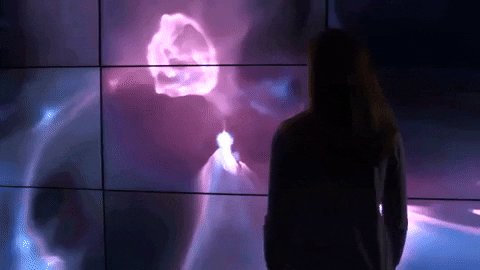
First, meet Dr. Amber Straughn. She grew up in a small farming town in Arkansas, where her fascination with astronomy began under beautifully dark, rural skies. After finishing a PhD in Physics, she came to NASA Goddard to study galaxies using data from our Hubble Space Telescope. In addition to research, Amber's role with the Webb project’s science team involves working with Communications and Outreach activities. She is looking forward to using data from Webb in her research on galaxy formation and evolution.
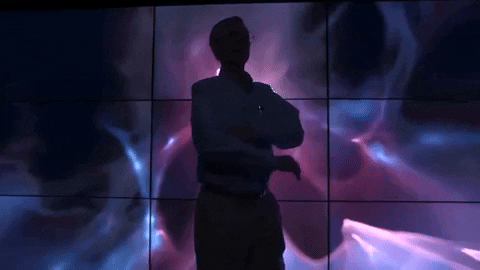
We also talked with Dr. John Mather, the Senior Project Scientist for Webb, who leads our science team. He won a Nobel Prize in 2006 for confirming the Big Bang theory with extreme precision via a mission called the Cosmic Background Explorer (COBE) mission. John was the Principal Investigator (PI) of the Far IR Absolute Spectrophotometer (FIRAS) instrument on COBE. He’s an expert on cosmology, and infrared astronomy and instrumentation.
Now, let’s get to the science of Webb!
Dr. Amber Straughn: The James Webb Space Telescope at its core is designed to answer some of the biggest questions we have in astronomy today. And these are questions that go beyond just being science questions; they are questions that really get to the heart of who we are as human beings; questions like where do we come from? How did we get here? And, of course, the big one – are we alone?
To answer the biggest questions in astronomy today we really need a very big telescope. And the James Webb Space Telescope is the biggest telescope we’ve ever attempted to send into space. It sets us up with some really big engineering challenges.

Dr. John Mather: One of the wonderful challenges about astronomy is that we have to imagine something so we can go look for it. But nature has a way of being even more creative than we are, so we have always been surprised by what we see in the sky. That’s why building a telescope has always been interesting. Every time we build a better one, we see something we never imagined was out there. That’s been going on for centuries. This is the next step in that great series, of bigger and better and more powerful telescopes that surely will surprise us in some way that I can’t tell you.
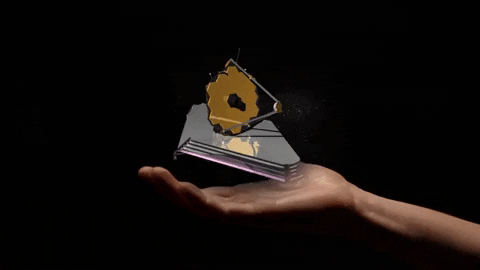
It has never been done before, building a big telescope that will unfold in space. We knew we needed something that was bigger than the rocket to achieve the scientific discoveries that we wanted to make. We had to invent a new way to make the mirrors, a way to focus it out in outer space, several new kinds of infrared detectors, and we had to invent the big unfolding umbrella we call the sunshield.

Amber: One of Webb’s goals is to detect the very first stars and galaxies that were born in the very early universe. This is a part of the universe that we haven’t seen at all yet. We don’t know what’s there, so the telescope in a sense is going to open up this brand-new part of the universe, the part of the universe that got everything started.
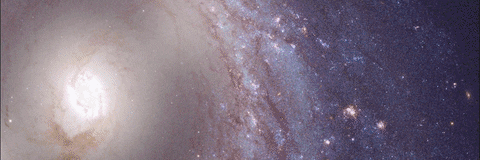
John: The first stars and galaxies are really the big mystery for us. We don’t know how that happened. We don’t know when it happened. We don’t know what those stars were like. We have a pretty good idea that they were very much larger than the sun and that they would burn out in a tremendous burst of glory in just a few million years.
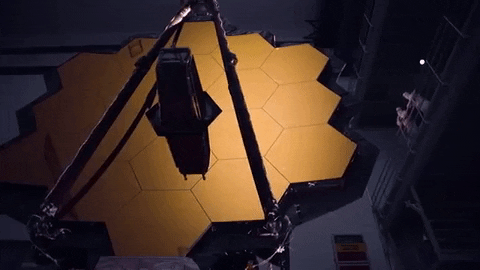
Amber: We also want to watch how galaxies grow and change over time. We have questions like how galaxies merge, how black holes form and how gas inflows and outflows affect galaxy evolution. But we’re really missing a key piece of the puzzle, which is how galaxies got their start.
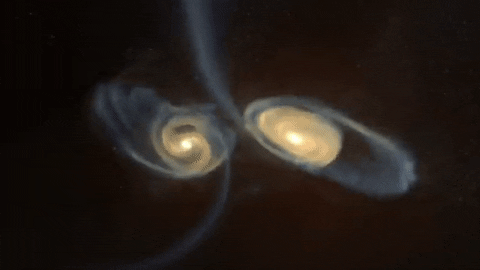
John: Astronomy is one of the most observationally based sciences we’ve ever had. Everything we know about the sky has been a surprise. The ancients knew about the stars, but they didn’t know they were far away. They didn’t know they were like the Sun. Eventually we found that our own galaxy is one of hundreds of billions of galaxies and that the Universe is actually very old, but not infinitely old. So that was a big surprise too. Einstein thought, of course the Universe must have an infinite age, without a starting point. Well, he was wrong! Our intuition has just been wrong almost all the time. We’re pretty confident that we don’t know what we’re going to find.
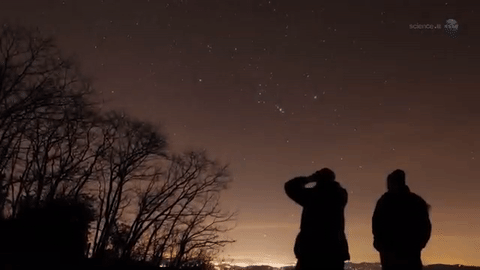
Amber: As an astronomer one of the most exciting things about working on a telescope like this is the prospect of what it will tell us that we haven’t even thought of yet. We have all these really detailed science questions that we’ll ask, that we know to ask, and that we’ll answer. And in a sense that is what science is all about… in answering the questions we come up with more questions. There’s this almost infinite supply of questions, of things that we have to learn. So that’s why we build telescopes to get to this fundamental part of who we are as human beings. We’re explorers, and we want to learn about what our Universe is like.
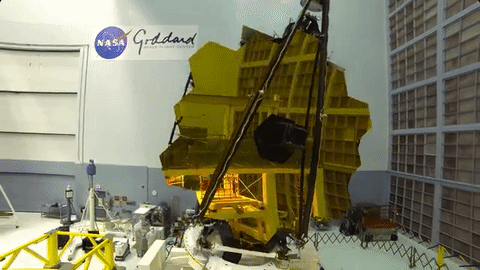
Webb will be the world's premier space science observatory. It will solve mysteries in our solar system, look beyond to distant worlds around other stars and probe the mysterious structures and origins of our universe – including our place in it. Webb is an international project we’re leading with our partners, ESA (European Space Agency) and the Canadian Space Agency.
To learn more about our James Webb Space Telescope, visit the website, or follow the mission on Facebook, Twitter and Instagram.
Make sure to follow us on Tumblr for your regular dose of space: http://nasa.tumblr.com.
#NASA#space#science#space telescope#JWST#James Webb Space Telescope#galaxies#stars#astronomy#star gazing#planets#black holes
996 notes
·
View notes
Text
5 Out-of-This World Technologies Developed for Our Webb Space Telescope
Our James Webb Space Telescope is the most ambitious and complex space science observatory ever built. It will study every phase in the history of our universe, ranging from the first luminous glows after the Big Bang, to the formation of solar systems capable of supporting life on planets like Earth, to the evolution of our own Solar System.
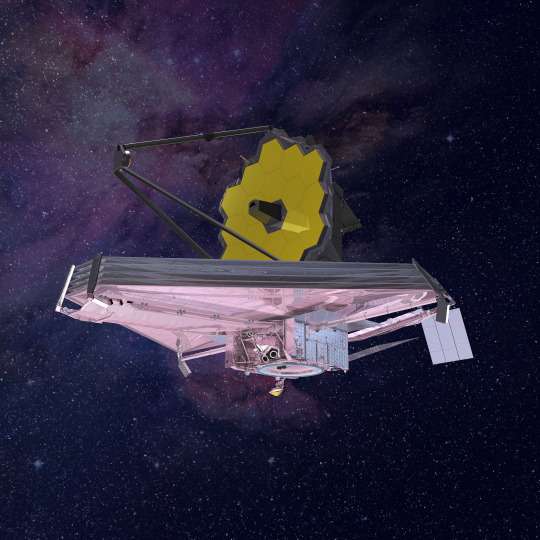
In order to carry out such a daring mission, many innovative and powerful new technologies were developed specifically to enable Webb to achieve its primary mission.
Here are 5 technologies that were developed to help Webb push the boundaries of space exploration and discovery:
1. Microshutters
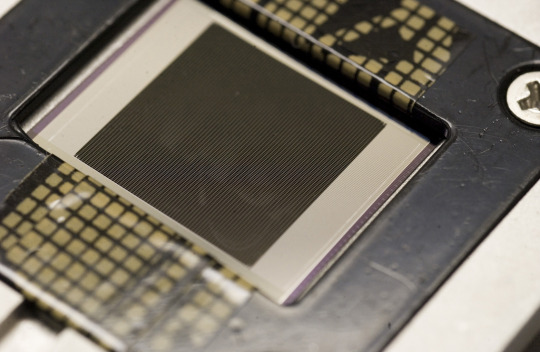
Microshutters are basically tiny windows with shutters that each measure 100 by 200 microns, or about the size of a bundle of only a few human hairs.
The microshutter device will record the spectra of light from distant objects (spectroscopy is simply the science of measuring the intensity of light at different wavelengths. The graphical representations of these measurements are called spectra.)

Other spectroscopic instruments have flown in space before but none have had the capability to enable high-resolution observation of up to 100 objects simultaneously, which means much more scientific investigating can get done in less time.
Read more about how the microshutters work HERE.
2. The Backplane
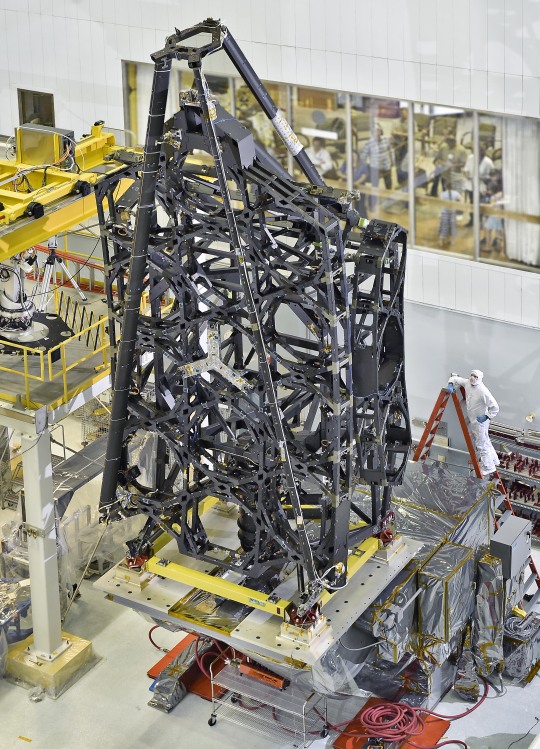
Webb's backplane is the large structure that holds and supports the big hexagonal mirrors of the telescope, you can think of it as the telescope’s “spine”. The backplane has an important job as it must carry not only the 6.5 m (over 21 foot) diameter primary mirror plus other telescope optics, but also the entire module of scientific instruments. It also needs to be essentially motionless while the mirrors move to see far into deep space. All told, the backplane carries more than 2400kg (2.5 tons) of hardware.
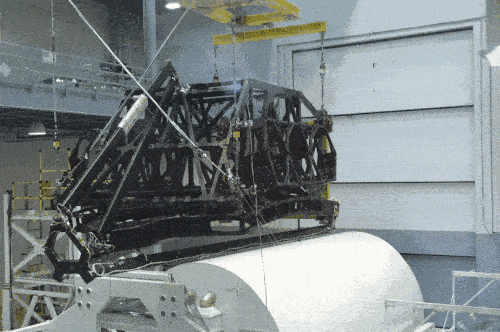
This structure is also designed to provide unprecedented thermal stability performance at temperatures colder than -400°F (-240°C). At these temperatures, the backplane was engineered to be steady down to 32 nanometers, which is 1/10,000 the diameter of a human hair!
Read more about the backplane HERE.
3. The Mirrors
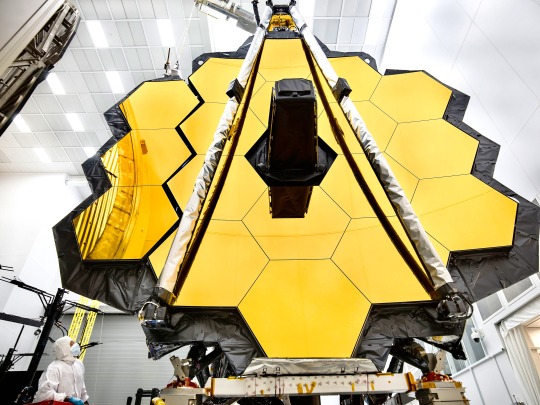
One of the Webb Space Telescope's science goals is to look back through time to when galaxies were first forming. Webb will do this by observing galaxies that are very distant, at over 13 billion light years away from us. To see such far-off and faint objects, Webb needs a large mirror.
Webb's scientists and engineers determined that a primary mirror 6.5 meters across is what was needed to measure the light from these distant galaxies. Building a mirror this large is challenging, even for use on the ground. Plus, a mirror this large has never been launched into space before!
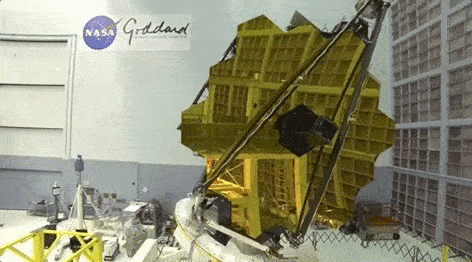
If the Hubble Space Telescope's 2.4-meter mirror were scaled to be large enough for Webb, it would be too heavy to launch into orbit. The Webb team had to find new ways to build the mirror so that it would be light enough - only 1/10 of the mass of Hubble's mirror per unit area - yet very strong.
Read more about how we designed and created Webb’s unique mirrors HERE.
4. Wavefront Sensing and Control
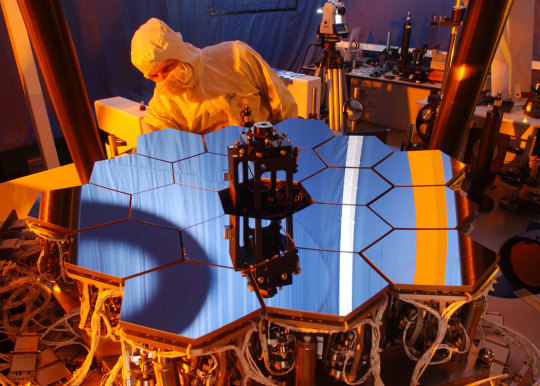
Wavefront sensing and control is a technical term used to describe the subsystem that was required to sense and correct any errors in the telescope’s optics. This is especially necessary because all 18 segments have to work together as a single giant mirror.
The work performed on the telescope optics resulted in a NASA tech spinoff for diagnosing eye conditions and accurate mapping of the eye. This spinoff supports research in cataracts, keratoconus (an eye condition that causes reduced vision), and eye movement – and improvements in the LASIK procedure.
Read more about the tech spinoff HERE.
5. Sunshield and Sunshield Coating
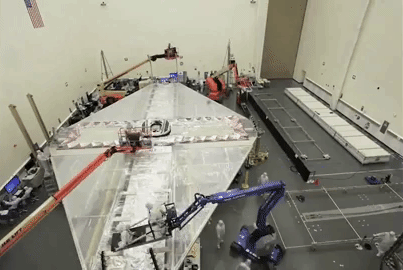
Webb’s primary science comes from infrared light, which is essentially heat energy. To detect the extremely faint heat signals of astronomical objects that are incredibly far away, the telescope itself has to be very cold and stable. This means we not only have to protect Webb from external sources of light and heat (like the Sun and the Earth), but we also have to make all the telescope elements very cold so they don't emit their own heat energy that could swamp the sensitive instruments. The temperature also must be kept constant so that materials aren't shrinking and expanding, which would throw off the precise alignment of the optics.
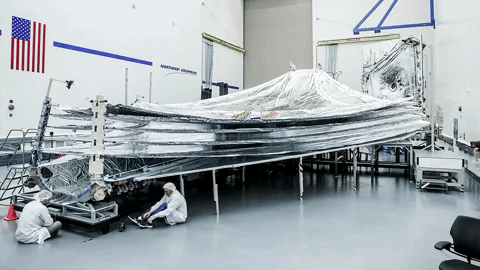
Each of the five layers of the sunshield is incredibly thin. Despite the thin layers, they will keep the cold side of the telescope at around -400°F (-240°C), while the Sun-facing side will be 185°F (85°C). This means you could actually freeze nitrogen on the cold side (not just liquify it), and almost boil water on the hot side. The sunshield gives the telescope the equivalent protection of a sunscreen with SPF 1 million!
Read more about Webb’s incredible sunshield HERE.
Learn more about the Webb Space Telescope and other complex technologies that have been created for the first time by visiting THIS page.
For the latest updates and news on the Webb Space Telescope, follow the mission on Twitter, Facebook and Instagram.
Make sure to follow us on Tumblr for your regular dose of space: http://nasa.tumblr.com.
#nasa#space#webb#james webb#space telescope#infrared#universe#solar system#technology#first#develop#explore#cosmos#observatory#jwst#science
4K notes
·
View notes
Text
10 Frequently Asked Questions About the James Webb Space Telescope
Got basic questions about the James Webb Space Telescope and what amazing things we’ll learn from it? We’ve got your answers right here!
The James Webb Space Telescope, or Webb, is our upcoming infrared space observatory, which will launch in 2021. It will spy the first luminous objects that formed in the universe and shed light on how galaxies evolve, how stars and planetary systems are born, and how life could form on other planets.
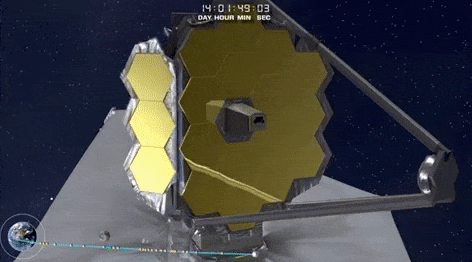
1. What is the James Webb Space Telescope?
Our James Webb Space Telescope is a giant space telescope that observes infrared light. Rather than a replacement for the Hubble Space Telescope, it’s a scientific successor that will complement and extend its discoveries.
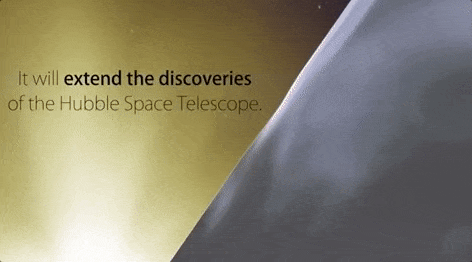
Being able to see longer wavelengths of light than Hubble and having greatly improved sensitivity will let Webb look further back in time to see the first galaxies that formed in the early universe, and to peer inside dust clouds where stars and planetary systems are forming today.
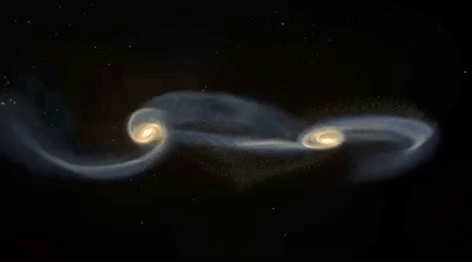
2. What are the most exciting things we will learn?
We have yet to observe the era of our universe’s history when galaxies began to form.
We have a lot to learn about how galaxies got supermassive black holes in their centers, and we don't really know whether the black holes caused the galaxies to form or vice versa.
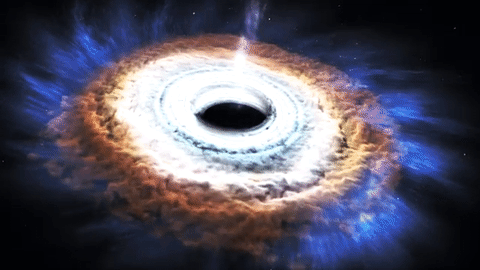
We can't see inside dust clouds with high resolution, where stars and planets are being born nearby, but Webb will be able to do just that.
We don't know how many planetary systems might be hospitable to life, but Webb could tell whether some Earth-like planets have enough water to have oceans.
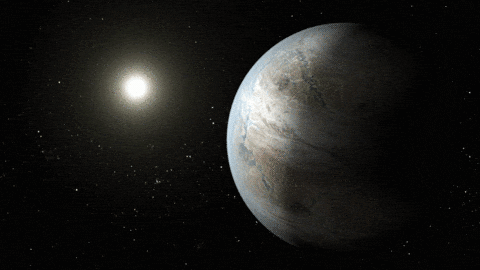
We don't know much about dark matter or dark energy, but we expect to learn more about where the dark matter is now, and we hope to learn the history of the acceleration of the universe that we attribute to dark energy.
And then, there are the surprises we can't imagine!
3. Why is Webb an infrared telescope?
By viewing the universe at infrared wavelengths with such sensitivity, Webb will show us things never before seen by any other telescope. For example, it is only at infrared wavelengths that we can see the first stars and galaxies forming after the Big Bang.

And it is with infrared light that we can see stars and planetary systems forming inside clouds of dust that are opaque to visible light, such as in the above visible and infrared light comparison image of the Carina Nebula.
4. Will Webb take amazing pictures like Hubble? Can Webb see visible light?
YES, Webb will take amazing pictures! We are going to be looking at things we've never seen before and looking at things we have seen before in completely new ways.
The beauty and quality of an astronomical image depends on two things: the sharpness and the number of pixels in the camera. On both of these counts, Webb is very similar to, and in many ways better than, Hubble.
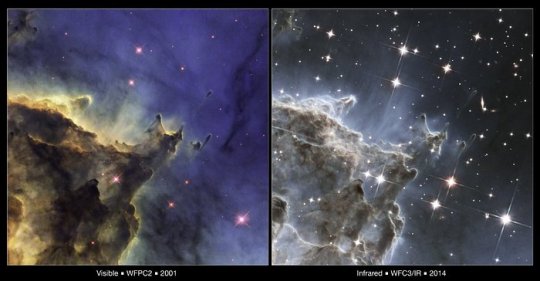
Additionally Webb can see orange and red visible light. Webb images will be different, but just as beautiful as Hubble's. Above, there is another comparison of infrared and visible light Hubble images, this time of the Monkey Head Nebula.
5. What will Webb's first targets be?
The first targets for Webb will be determined through a process similar to that used for the Hubble Space Telescope and will involve our experts, the European Space Agency (ESA), the Canadian Space Agency (CSA), and scientific community participants.
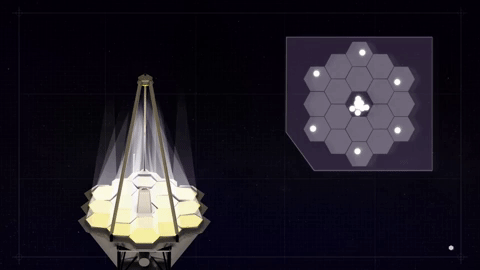
The first engineering target will come before the first science target and will be used to align the mirror segments and focus the telescope. That will probably be a relatively bright star or possibly a star field.
6. How does Webb compare with Hubble?
Webb is designed to look deeper into space to see the earliest stars and galaxies that formed in the universe and to look deep into nearby dust clouds to study the formation of stars and planets.
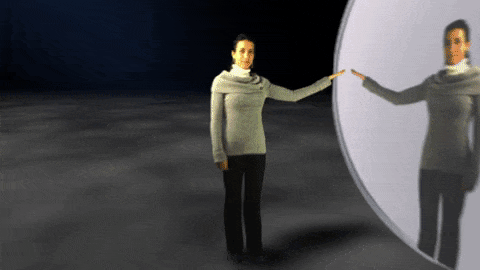
In order to do this, Webb has a much larger primary mirror than Hubble (2.5 times larger in diameter, or about 6 times larger in area), giving it more light-gathering power. It also will have infrared instruments with longer wavelength coverage and greatly improved sensitivity than Hubble.
Finally, Webb will operate much farther from Earth, maintaining its extremely cold operating temperature, stable pointing and higher observing efficiency than with the Earth-orbiting Hubble.
7. What will Webb tell us about planets outside our solar system? Will it take photos of these planets?
Webb will be able to tell us the composition of the atmospheres of planets outside our solar system, aka exoplanets. It will observe planetary atmospheres through the transit technique. A transit is when a planet moves across the disc of its parent star.

Webb will also carry coronographs to enable photography of exoplanets (planets outside our solar system) near bright stars (if they are big and bright and far from the star), but they will be only "dots," not grand panoramas. Coronographs block the bright light of stars, which could hide nearby objects like exoplanets.
Consider how far away exoplanets are from us, and how small they are by comparison to this distance! We didn’t even know what Pluto really looked like until we were able to send an observatory to fly right near it in 2015, and Pluto is in our own solar system!
8. Will we image objects in our own solar system?
Yes! Webb will be able to observe the planets at or beyond the orbit of Mars, satellites, comets, asteroids and objects in the distant, icy Kuiper Belt.
Many important molecules, ices and minerals have strong characteristic signatures at the wavelengths Webb can observe.
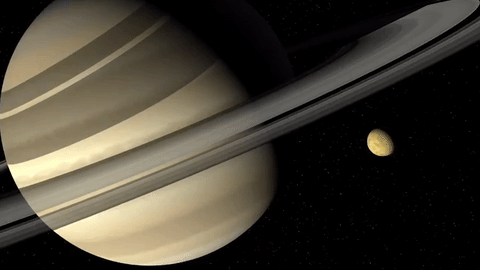
Webb will also monitor the weather of planets and their moons.
Because the telescope and instruments have to be kept cold, Webb’s protective sunshield will block the inner solar system from view. This means that the Sun, Earth, Moon, Mercury, and Venus, and of course Sun-grazing comets and many known near-Earth objects cannot be observed.
9. How far back will Webb see?
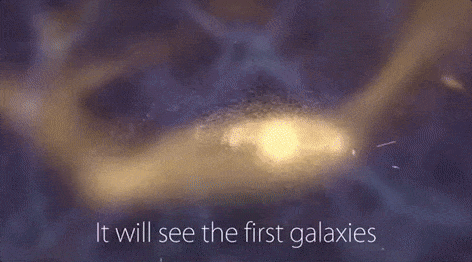
Webb will be able to see what the universe looked like around a quarter of a billion years (possibly back to 100 million years) after the Big Bang, when the first stars and galaxies started to form.
10. When will Webb launch and how long is the mission?
Webb will launch in 2021 from French Guiana on a European Space Agency Ariane 5 rocket.
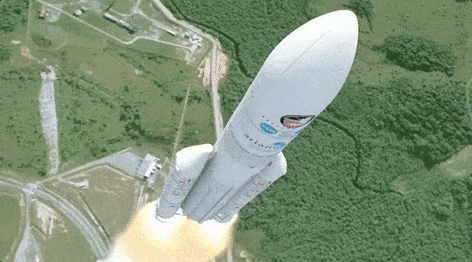
Webb’s mission lifetime after launch is designed to be at least 5-1/2 years, and could last longer than 10 years. The lifetime is limited by the amount of fuel used for maintaining the orbit, and by the possibility that Webb’s components will degrade over time in the harsh environment of space.
Looking for some more in-depth FAQs? You can find them HERE.
Learn more about the James Webb Space Telescope HERE, or follow the mission on Facebook, Twitter and Instagram.
IMAGE CREDITS Carina Nebula: ESO/T. Preibisch Monkey Head Nebula: NASA, ESA, the Hubble Heritage Team (STScI/AURA), and J. Hester
Make sure to follow us on Tumblr for your regular dose of space: http://nasa.tumblr.com.
#nasa#space#jwst#jameswebb#webb#jameswebbspacetelescope#infrared#visible#light#universe#galaxy#explore#discover#launch#galaxies#bigbang#blackhole#hubble
2K notes
·
View notes
Text
The most detailed map of the Orion A molecular cloud to date
Having the ability to carefully observe other celestial locals, both near and far, assists astronomers comprehend the development and advancement of our strange universe, and it’s obvious that advanced telescopes are mostly accountable for the considerable rise in outstanding discoveries. A current example of these developments included making use of high-tech telescopic information to develop a careful map of our energetic, star-bearing next-door neighbor– the Orion A molecular cloud.
Orion A sits about 1,200 light-years from Earth and is the closest area to us that quickly forms high-mass stars. The molecular cloud homes compact star clusters much like the one our Sun most likely formed in, implying the Orion A molecular cloud consists of an excellent population abundant in Sun-like stars. To assist examine this outstanding breeding place, a Yale-led group of scientists observed Orion A to develop the most extensive map of the star-forming molecular cloud to this day. Their paper was just recently accepted by the Astrophysical Journal Supplement.
” Our maps penetrate a wide variety of physical scales had to study how stars form in molecular clouds, and how young stars affect their moms and dad cloud,” stated Shuo Kong, a postdoctoral partner at Yale and lead author of the paper, in apress release
.
youtube
To gather the information required for such a comprehensive map, the scientists used both the Nobeyama Radio Observatory (NRO) telescope in Japan and the now-defunct Combined Variety for Research Study in Millimeter Astronomy (CARMA) in California, which stopped operations in2015 CARMA was comprised of 23 various telescopes that, when integrated, formed an effective interferometer– which combines signals from different telescopes to offer higher-resolution observations. The maps and datasets coming from this cooperation ended up being referred to as the CARMA-NRO Orion Study.
” Our study is a special mix of information from 2 really various telescopes,” stated Jesse Feddersen, a Yale college student and co-author of the research study. “We have actually integrated the zoom of CARMA with the wide-angle of NRO to concurrently record the information of specific forming stars and the total shape and movements of the huge molecular cloud.”
In addition to utilizing the map to study the development and advancement of the stars within Orion A, astronomers will likewise have the ability to utilize the information to develop designs of far-off galaxies. With strong understanding of how stars form and develop within Orion A, scientists can anticipate the outstanding patterns of other molecular clouds by using the existing design.
” The information we offer here will benefit research study on a broad series of evolutionary phases of the star development procedure and on the environment stars type,” stated Héctor Arce, an astronomy teacher at Yale and the group’s concept private investigator.
Peering into the Orion A molecular cloud provides us a look into the life of our close celestial next-door neighbor and assists us comprehend how Sun-like stars form in our neck of the woods. In the meantime, it will likewise offer astronomers insights into how stars form and develop in galaxies much further from house, however with NASA’s current launch of the Transiting Exoplanet Study Satellite (TESS) and the 2020 launch of the James Webb Space Telescope, it may not be long up until we get to observe them up close and individual.
( function( d, s, id) var js, fjs = d.getElementsByTagName( s)[0];. if (d.getElementById( id)) return;. js = d.createElement( s); js.id = id;. js.src="http://connect.facebook.net/en_US/sdk.js#xfbml=1&version=v2.4";. fjs.parentNode.insertBefore( js, fjs);. (file, 'script', 'facebook-jssdk'));.
New post published on: https://www.livescience.tech/2018/05/18/the-most-detailed-map-of-the-orion-a-molecular-cloud-to-date/
0 notes